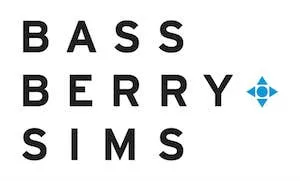On September 11, in response to a New York federal district court striking down some of the Department of Labor (DOL) regulations regarding the Families First Coronavirus Response Act (FFCRA), the DOL issued guidance (Guidance) affirming in part and revising in part, its regulations. While most of the Guidance does not result in any significant change or consequence to employers, the DOL's revision of its prior definition of "health care provider" significantly impacts how healthcare entities in the U.S. must implement paid leave benefits under the FFCRA.
Work Availability
The Guidance clarifies that the "work-availability" requirement under the FFCRA applies to all types of leave taken under the FFCRA. In other words, to take any leave under the FFCRA, the FFCRA-qualifying reason must be the actual reason that the employee is unable to work rather than the employer not having work available for the employee to perform. The DOL makes clear in the Guidance that the "work-availability" requirement ensures that employers are not forced to provide paid leave benefits under the FFCRA where the employer would not have had work for the employee to perform, regardless of whether the employee has a qualifying reason for leave under the FFCRA.
Intermittent Leave
The Guidance affirms that intermittent leave under the FFCRA is only permitted for leave based on the need to care for a child whose school, place of care, or child care provider is closed or unavailable due to COVID-19, and only with the employer's consent. Without the consent of the employer, the employee is not entitled to take intermittent leave.
Healthcare Provider Exception
In its most substantive revision to the regulations, the Guidance provides a new definition for "health care providers" who may be excluded by their employers from paid leave benefits under the FFCRA.
To the surprise of healthcare entities across the country, the prior FFCRA regulations included an extremely broad definition of "health care provider," which centered on the identity of the employer instead of the services or duties provided by the employee in question. Specifically, "health care provider" included any person employed at a doctor's office; hospital; healthcare center; clinic; medical school; nursing facility or retirement facility; nursing home; home healthcare provider; pharmacy; local health department or agency; any facility that performs laboratory or medical testing; any entity that contracts with any of the prior-listed entities to provide services or to maintain the operation of the facility; any entity that provides medical services, produces medical products, or is otherwise involved in the making of COVID-19-related medical equipment, tests, drugs, vaccines, diagnostic vehicles or treatments; and any individual determined to be a "health care provider" necessary for a state's or territory's response to COVID-19.
The State of New York subsequently filed a lawsuit against the DOL in the U.S. District Court for the Southern District of New York (District Court) arguing that certain portions of the FFCRA regulations, including the definition of "health care provider," were invalid. In a decision issued on August 3, 2020, the District Court ruled, in part, that the DOL's broad definition of "health care provider" was invalid because it did not take into account the duties and responsibilities of the employees or whether such employees are engaged in the provision of healthcare services.
In response, the DOL has revised its definition of "health care provider" to include the following:
- Anyone who is defined as a "health care provider" under the FMLA (i.e., physicians, nurse practitioners, dentists, psychologists, physician assistants, chiropractors, etc.).
- Any other employee capable of providing healthcare services, meaning he or she is employed to provide diagnostic services, preventive services, treatment services, or other services that are integrated with and necessary to the provision of patient care and, if not provided, would adversely impact patient care (i.e., nurses, nurse assistants, medical technicians, laboratory technicians, etc.).
The regulations explicitly exclude from the "health care provider" definition, any employee who does not provide healthcare services, such as food service workers, building maintenance staff, IT professionals, HR personnel, etc., even if the services of such employees could have an impact on the provision of healthcare services.
The DOL's new approach of focusing on the employee's job duties as opposed to the identity of the employer in defining a "health care provider" will prohibit healthcare entities from excluding much of their non-clinical support staff from the FFCRA's paid leave benefits, such as office personnel, facility maintenance personnel, and food prep employees.
Notice Requirements
Also in response to the District Court's decision, the Guidance revises the requirement that an employee's notice to their employer regarding a need for FFCRA leave be given "prior to" taking paid sick leave or expanded family and medical leave. The revised requirement outlined in the regulations is that the employee must provide such notice as soon as practicable.
The content of this article is intended to provide a general guide to the subject matter. Specialist advice should be sought about your specific circumstances.

